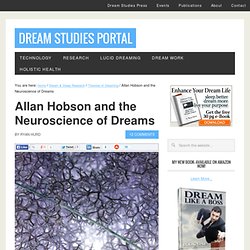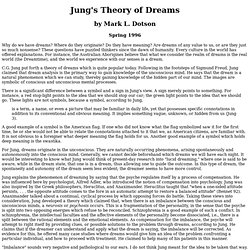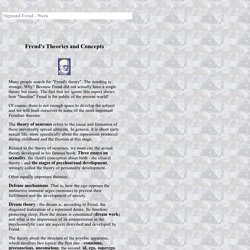

Allan Hobson and the Neuroscience of Dreams. The neuroscience of dreaming is a relatively new enterprise but has quickly become the major paradigm of experimental dream research today.

J. Allan Hobson, Professor of Psychiatry Emeritus at Harvard University, is the undisputed celebrity of this scientific outlook, and the author of several popular books on the topic. Hobson, in his 30 years of tireless work, is also perhaps the greatest provocateur in the field of dream studies, stirring up old philosophical conflicts such as the value of objective science over experience, and mechanism over meaning. But what Hobson is really known for is sticking it to Freudian theory. In his break-out 1977 paper, Hobson and co-author McCarley declared victory over Freud (and the entire psychoanalytic community) by reporting their discovery that dreams in the REM state form by grace of neurochemical changes in the brain. Why dreams are so hard to remember: they are never encoded in short-term memory in the first place Why are Dreams so Weird? Dream Theories: Frederick Perls. This web site designed and maintained by Dream Moods, Inc.

Email the webmaster at dreammoods dot com with questions or comments about this web site. View our Disclaimer and Privacy Policy. Copyright 2000-2013 Dream Moods, Inc. All rights reserved. Content within this website is registered with the US Library of Congress and protected under Copyright Registration Number TX7265720. No part of this website may be reproduced, duplicated, reengineered, modified, translated or distributed in any form or manner, either mechanically or electronically, including photocopying, recording, or any information storage system, without the prior written permission of Dream Moods, except for the inclusion of brief quotations in an article, review, forum post, research paper, or blog and as long as Dream Moods is properly cited. Dream Theories: Carl Jung.
Carl Jung's Archetypes To further help you in uncovering the meaning of your dreams, Jung noted certain dream symbols that possess the same universal meaning for all men and women.

He terms this phenomenon the "collective unconscious". While dreams are personal, your personal experiences often touch on universal themes and symbols. These symbols are believed to occur in every culture throughout. Jung1. Spring 1996 Why do we have dreams?

Where do they originate? Do they have meaning? Are dreams of any value to us, or are they just so much nonsense? These questions have puzzled thinkers since the dawn of humanity. C.G. There is a significant difference between a symbol and a sign in Jung's view. Is a term, a name, or even a picture that may be familiar in daily life, yet that possesses specific connotations in addition to its conventional and obvious meaning. A good example of a symbol is the American flag. For Jung, dreams originate in the unconscious.
Jung explains the phenomenon of dreaming by saying that the psyche regulates itself by a process of compensation. "Imbalance" sounds very negative and pathological to our ears. Jung believes that the unconscious communicates with the conscious mind through dream imagery. Unlike Freud, Jung did not believe the dream should be interpreted using "free association. " Jung believes that creative ideas can come to us through dreams. Dream Theories: Sigmund Freud. Sigmund Freud Considered the father of psychoanalysis, Sigmund Freud (1856-1939) revolutionizes the study of dreams with his work The Interpretation Of Dreams.

Freud begins to analyze dreams in order to understand aspects of personality as they relate to pathology. He believes that nothing you do occurs by chance; every action and thought is motivated by your unconscious at some level. In order to live in a civilized society, you have a tendency to hold back our urges and repress our impulses. However, these urges and impulses must be released in some way; they have a way of coming to the surface in disguised forms. One way these urges and impulses are released is through your dreams. Freud categorizes aspects of the mind into three parts: Id - centered around primal impulses, pleasures, desires, unchecked urges and wish fulfillment.
Ego - concerned with the conscious, the rational, the moral and the self-aware aspect of the mind. Sigmund Freud - Theory. Freud Theories and Concepts (Topics) Stages of Development or Psychosexual Development -> Freud's Psyhosexual Stages of Development (by David B.

Stevenson)-> Modules on Freud (cla.purdue.edu) Dream Theory -> A short introductory paper on dreams-> Examples of dreams interpreted and resources - site section-> About the Dream Work (nus.edu.sg)-> Freudian Dream Theory and Neurons-> Dream Interpretation and Psychoanalysis (paper) Id, Ego, Superego -> Freud's structural and topographical models of personality (from Allpsych) Defense Mechanisms -> Defense mechanisms (rpi.edu)-> List with explenation (Utah Psych) More on Freud's Theory -> Introduction to Freud's theories (from cla.purdue.edu) - Psychosexual development (stages)- The Unconscious- Neurosis- Transference and trauma.